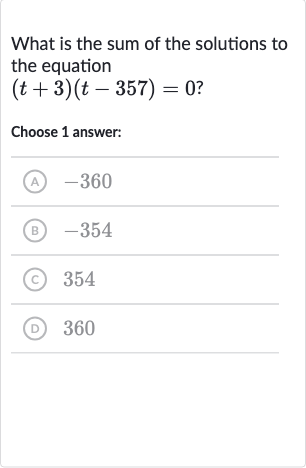Full solution
Q. What is the sum of the solutions to the equation?Choose answer:(A) (B) (C) (D)
- Set First Factor Equal: To find the sum of the solutions to the equation .
- Solve for First Factor: First, set the first factor equal to zero: . Solving for gives us .
- Set Second Factor Equal: Next, set the second factor equal to zero: . Solving for gives us .
- Solve for Second Factor: Now, we add the two solutions together to find the sum: .
- Find Sum of Solutions: The sum of the solutions to the equation is , which corresponds to answer choice .

